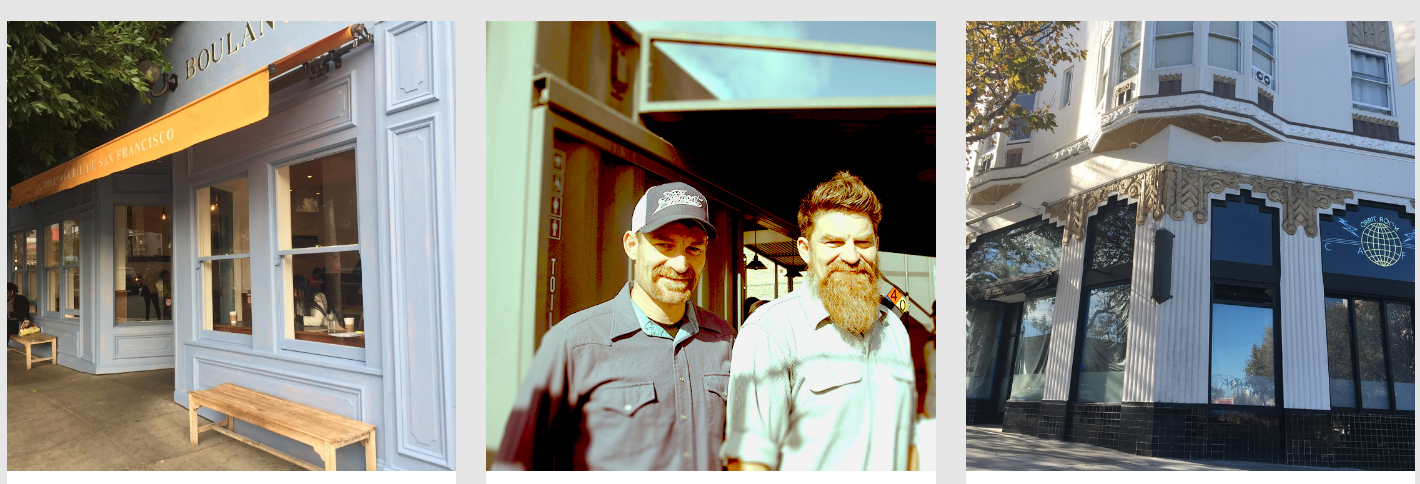It’s been well-chronicled. The long death-rattle of local journalism has opened an immense opportunity for real estate brokerages and agents, to, as media luminary Gary Vaynerchuck implored the crowd at Inman Connect in August, become the digital mayors of their towns.
That’s starry-eyed counsel. Media and publishing isn’t easy, but, when done well and with the right commitment, it bears more fruit than persimmon trees in late summer. And takes about as long from inception to start bearing. (For a flavor of the required commitment: see Marguerite Giguere, Dustin Oldfather, Nest Realty).
That’s where San Francisco hyperlocal media startup Hoodline comes in — it offers a plug-and-play rich local media solution for both brokerages and agents (just in San Francisco for now).
By collecting and chopping up vast amounts of local data, cultivating a broadening set of local tipsters and working with local, freelance content producers, Hoodline is building out what it hopes is the future of local journalism, and allowing brokers and agents to house it on their sites for a subscription fee.
“Hoodline is a media-tech company built around community,” Hoodline’s chief operating officer Jes Wolfe told me. Its network of freelancers and in-house editors publish between 10 and 20 San Francisco stories each day, tagged by neighborhood, reaching approximately 400,000 readers each month, according to Wolfe.
Hoodline offers both an iFrame solution — which works essentially as a website within a website — and an API (application programming interface) that allows agents and firms to seamlessly pull in its automatically updated content to their sites.
The sharply branded San Francisco brokerage Climb Real Estate, which the nation’s largest brokerage, NRT, acquired in late August, was the first to incorporate the latter with an early August launch. It’s part of the firm’s budding content strategy.
Climb loves the ability to display deeper local info that dynamically updates seamlessly on its neighborhood pages with Hoodline, according to Climb marketing director Gianni Lyle.

The company’s not the only fan.
Climb’s consistently fresh, new high-quality neighborhood-specific content powered by Hoodline also delights the brokerage’s agents, Climb communications director Graham Carlson told me.
“Agents are happy and proud to send clients to the neighborhood pages,” Carlson said.
A number of San Francisco brokerages and agents have incorporated the iFrame solution. They include: Barbagelata Real Estate and agent Connie Chung.
The content aggregation firm Ripple acquired Hoodline in early August, which, the companies say, will facilitate expansion from Hoodline’s San Francisco nest. No word on where or when now.
How Hoodline works
Hoodline pulls in content from three sources:
- A data-scraping tool Hoodline developed, HoodBot. It pulls data from government databases, including city, county and state. This allows it pick up on new neighborhood endeavors (restaurants, bars, retail shops, developments) the day investors apply for a permit and see police reports as soon as they’re published. The site scoops many stories this way, Wolfe told me.
- A large freelance network of approximately 50 active writers. Hoodline pays these content producers by the story and manages them with four professional editors who do the polishing work requisite to ensure consistent quality: fact-checking, voice, grammar. The editors manage a Slack channel for San Francisco neighborhood.
- A growing tipster community of local residents and others numbering in the thousands who share info on emerging stories: “there are 20 police cars outside my building” and “a new ice cream pop-up shop is dealing on my corner” are examples.
The firm eschews clickbait, sugary stories that carry flash but little substance. By focusing on important, interesting stories, the network hopes to foster the conversations and knowledge that spins cities, neighborhoods forward with engaged citizens, Hoodline editor-in-chief Eric Eldon told me.
Using analytics and common sense, the firm has also worked to keep evergreen stories — those with hyper-local relevance beyond just a few days, the lifecycle of a traditional stories — in front of readers who would benefit, appreciate them.
Hoodline’s media dream + real estate community marketing’s future?
Hoodline flowered out of the Lower Haight San Francisco neighborhood blog, Haighteration, which ran from 2010 to 2014. The founder, Andrew Dudley, started two more neighborhood blogs, which gained readership and tipster support, and soon Hoodline was born. (Dudley moved into an advisory role with Hoodline’s August sale to Ripple).
(Hoodline’s organic, local beginnings mirror the real estate design site Curbed, which started as a New York City neighborhood blog, blossomed into a nationwide network and then joined Vox Media’s growing empire.)
Content sites are always hungry and their food goes stale so quickly. Also, the power of content marketing continues to flourish, so many businesses need quality, frequently updated content — real estate agents and brokers chief among them.
That recognition spawned Hoodline’s real estate kits.
“We can do content better, dynamically,” Wolfe said.
For real estate firms and agents looking to outsource a quality media play, this is a compelling option. The API product is especially compelling, as the iFrame design presentation is unavoidably a bit clunky.
Real estate is just the beginning. The firm sees opportunities in tourism and finance, too.
Bottomline, there’s not really a good, authoritative site to find neigbhorhood, street-level info about where to where to walk your dog, where to eat on Tuesday night, how the area’s changing.
Distributing this content to subscribers to house on their sites is the firm’s big opportunity and one way it’s looking to monetize news in a sustainable way, Wolfe said.
Hoodline’s trajectory, a living Walk Score
Soon firms who subscribe to Hoodline’s content API will be able to customize which Hoodline stories show up on their site and some of its style like fonts.
Hoodline wants to make a living Walk Score. Readers won’t just see that a bar is 0.3 miles away from them, but they’ll get a quality story about it. Context is king, and very hard to do.
Stay tuned.


